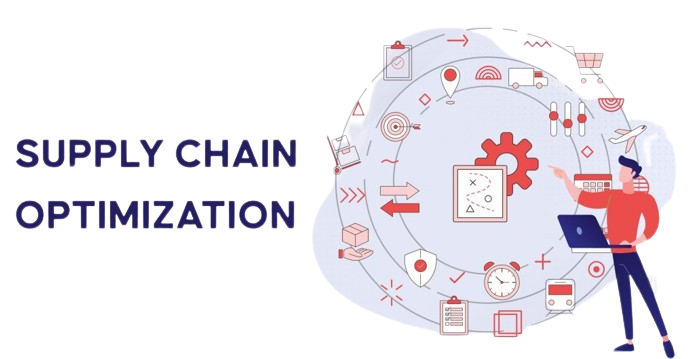- admin
- Supply Chain
- 0 Comments
Supply chain optimization is a crucial aspect of any business that aims to improve efficiency, reduce costs, and enhance customer satisfaction. In today’s competitive market, having a well-optimized supply chain can be a significant differentiator. This comprehensive guide explores ten best practices for supply chain optimization that can help businesses streamline their operations and achieve better results.
1. Implement Advanced Analytics
Advanced analytics, including predictive and prescriptive analytics, can significantly enhance supply chain optimization. By leveraging data-driven insights, companies can forecast demand, manage inventory levels, and optimize transportation routes.
Benefits:
- Improved demand forecasting accuracy
- Enhanced decision-making capabilities
- Reduced operational costs
Implementation Tips:
- Invest in advanced analytics tools and software
- Train your team on how to interpret and utilize data insights.
- Regularly update and maintain data quality.
2. Adopt a Lean Manufacturing Approach
Lean manufacturing focuses on minimizing waste while maximizing productivity. Applying lean principles to the supply chain can lead to more efficient processes and better resource utilization.
Benefits:
- Reduced waste and inefficiencies
- Increased production speed
- Lower operational costs
Implementation Tips:
- Identify and eliminate non-value-added activities.
- Streamline processes to enhance flow and reduce bottlenecks
- Implement continuous improvement practices.
3. Enhance Supplier Relationships
Strong relationships with suppliers are vital for a resilient supply chain. Collaborative relationships can lead to better communication, improved quality, and cost savings.
Benefits:
- Improved supply chain reliability
- Enhanced product quality
- Cost reductions through better terms and collaboration
Implementation Tips:
- Establish clear communication channels with suppliers
- Collaborate on demand forecasting and inventory management.
- Foster long-term partnerships based on mutual trust and benefit.
4. Optimize Inventory Management
Effective inventory management ensures that the right products are available at the right time, minimizing stockouts and overstock situations. Techniques like Just-in-Time (JIT) and ABC analysis can be beneficial.
Benefits:
- Reduced carrying costs
- Improved cash flow
- Better service levels
Implementation Tips:
- Utilize inventory management software for real-time tracking.
- Implement JIT to reduce excess inventory.
- Conduct regular inventory audits and ABC analysis.
5. Leverage Technology and Automation
Technology and automation can revolutionize supply chain operations, enhancing efficiency and accuracy. Automated systems can handle repetitive tasks, allowing human resources to focus on strategic activities.
Benefits:
- Increased operational efficiency
- Reduced errors and manual labor
- Enhanced scalability
Implementation Tips:
- Invest in automation tools such as warehouse management systems (WMS) and robotic process automation (RPA).
- Integrate IoT devices for real-time monitoring and tracking.
- Train employees to work alongside automated systems.
6. Implement a Robust Transportation Management System (TMS)
A TMS can optimize logistics by providing visibility into transportation operations, improving route planning, and reducing shipping costs. It helps in managing the entire transportation process from planning to execution.
Benefits:
- Reduced transportation costs
- Improved delivery times
- Enhanced visibility and control
Implementation Tips:
- Select a TMS that integrates well with your existing systems
- Use the TMS for route optimization and carrier selection
- Monitor and analyze transportation performance metrics
7. Foster a Culture of Continuous Improvement
A culture of continuous improvement encourages ongoing evaluation and enhancement of supply chain processes. Techniques like Six Sigma and Kaizen can be instrumental in fostering this culture.
Benefits:
- Continuous operational enhancements
- Increased employee engagement
- Long-term sustainability
Implementation Tips:
- Encourage employee feedback and involvement in process improvement.
- Implement Six Sigma or Kaizen methodologies
- Regularly review and update processes based on performance data.
8. Enhance Demand Forecasting
Accurate demand forecasting is essential for effective supply chain management. It helps in planning inventory, production, and distribution activities to meet customer demand efficiently.
Benefits:
- Reduced stockouts and overstock situations
- Improved customer satisfaction
- Enhanced production planning
Implementation Tips:
- Use statistical and machine learning models for forecasting
- Incorporate market trends and external factors into forecasts
- Collaborate with sales and marketing teams for better insights
9. Focus on Sustainability
Sustainable supply chain practices not only benefit the environment but also improve operational efficiency and brand reputation. This includes reducing carbon footprint, optimizing resource usage, and ensuring ethical sourcing
Benefits:
- Enhanced brand reputation
- Reduced environmental impact
- Cost savings through efficient resource use
Implementation Tips:
- Conduct sustainability audits of your supply chain.
- Implement green logistics practices
- Partner with suppliers who follow ethical and sustainable practices.
10. Improve Visibility and Transparency
Visibility and transparency across the supply chain ensure that all stakeholders have access to real-time information, enabling better decision-making and quicker responses to disruptions
Benefits:
- Improved risk management
- Enhanced collaboration with partners
- Better customer trust and satisfaction
Implementation Tips:
- Use supply chain visibility tools and platforms
- Share information with key stakeholders in real-time
- Implement blockchain technology for secure and transparent transactions.

